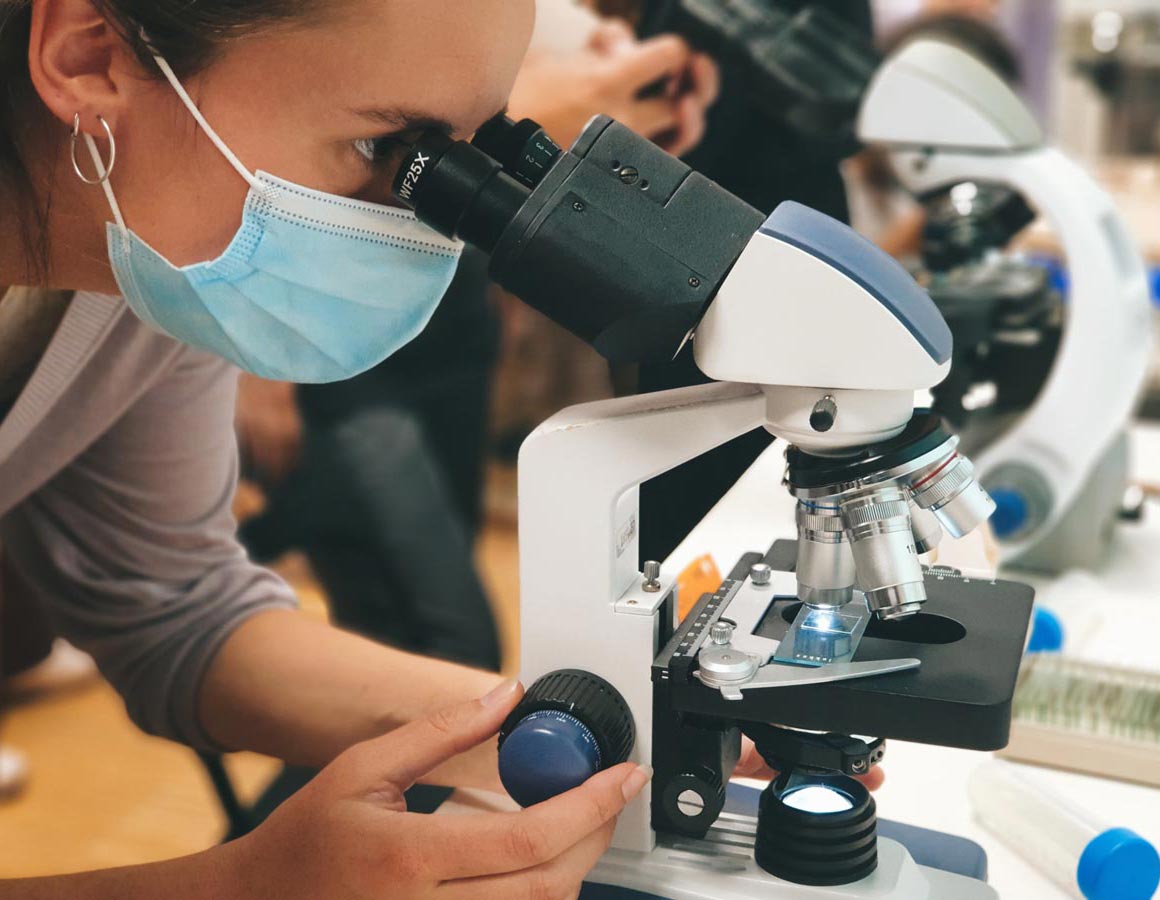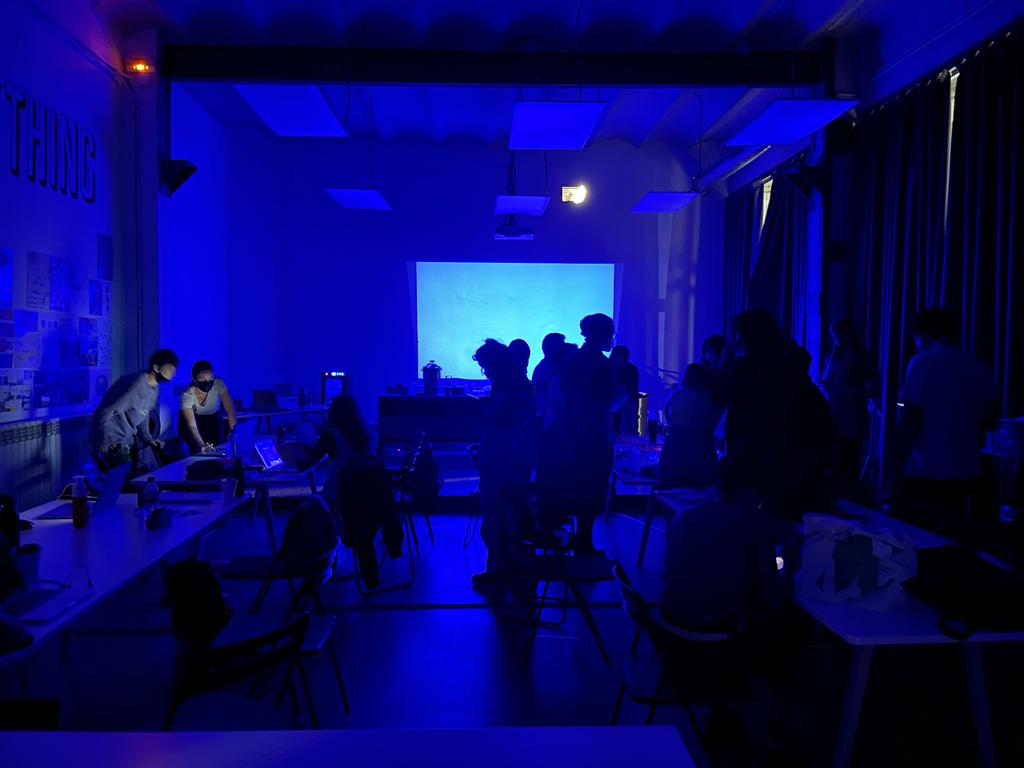/weekThree.bio_zero
(24_october_2021)
This week's topic focused on biology from zero, travelling from the composition
of the smallest to organisms and multicellular living beings. Even considering the
fact that a lot of information has been given in the few sessions we have had and
it has not been easy to assimilate all the content, this course has been useful to
create a solid foundation in the subject of biology and to experiment with materials
that some of us had not had the opportunity to try until now.
The most instructive part of this week, in my opinion, has been the practical
sessions we have been doing in the afternoons, where everything explained in
the morning made sense and the practical functionality of the contents was
understood.
.experimenting_with_bio
/CREATING_A_MEDIUM
On the first day, each of us created a medium for different types of growth,
in my case Axitic for Lactobacillus. To do so, we had to calculate the right
proportion of three products: tomato juice, agar agar and Marmite together
with water. Then we sterilised the mixture with a pressure cooker and finally
we created a sterile environment with the Bunsen lighter to distribute the
mixture between the different Petri dishes. The next day we added the culture
we wanted to grow to the media and put it in the incubator at a temperature of
35ºC to create the environment for the growth.
/GETTING_TO_KNOW_SPIRULINA
The second practical session focused on the cultivation and applications of
Spirulina, an algae considered a superfood thanks to its high amount of
proteins, vitamins and nutrients. During the session we prepared the ideal
environment for the growth of this algae and saw the procedure to cultivate it.
We also created a mixture of tea and sugar to grow a small piece of Kambucha that
Núria had given us. After the session, Chris developed a system for pumping the
water out of the Spirulina with an ESP32 board and a relay. The pumping of the water
allows the algae to receive the necessary oxygen in all parts of the culture.
/PLAYING_WITH_MICROSCOPES
Thursday's session was dedicated to exploring different materials and
organisms with microscopes in order to identify their composition and content.
Even though my knowledge does not allow me to recognise every single shape
under the microscope, it was a great experience to be able to see forms and
textures with the magnifying lenses and get a different perspective of what
is around us. I actually found it very artistic to contemplate all this and
I think the photographs I took explain why.
/USING_A_PCR
On the last day of bio Núria showed us the procedure to do a PCR test. For
this, specific tools are needed, specifically a machine that creates
temperature cycles of 95-50-72ºC, another one that performs the electrophoresis
and finally a blue light transilluminator to see the result.







.summary_of_a_paper
For the task of reading and summarising a scientific article I decided to choose
one related to neuroscience. Neuroscience is a field of science that studies the
nervous system from molecular to cognitive and behavioural studies. This field has
always fascinated me, specifically the fact of being able to give an empirical and
scientific answer to some actions or disorders developed in individuals. In this
case, I wanted to focus the study of neuroscience on addictions, a very common
problem among young people, and I wanted to find out more about it.
NEUROSCIENCE OF ADDICTION
G F Koob , P P Sanna, F E Bloom
DOI: 10.1016/s0896-6273(00)80557-7
The article begins by talking about adolescents and the fact that they are more
vulnerable to addiction by linking it to brain development. However, it says that
the genetic component is 40-60% responsible for this, as well as the environment
and personal situations. Young people start taking drugs because they are in a
phase of risk-taking and novelty-seeking, and in some cases consumption goes further.
Knowing more about the brain could help to find ways to change these habits.
In relation to diseases, it says that people with a disorder are more likely to
be addicted and vice versa. Some people with disorders tend to self-medicate and
that ends up creating addiction. Still, it says there is not enough evidence to make
a direct link.
It goes on to describe the consequences of being in a risky environment and how
this affects drug use. In some environments it is much easier to obtain drugs and
poor socio-economic status together with poor family support can be aspects that
promote drug use.
Finally, it was pointed out that neuronal repair of the brains of people who have
been drug dependent is not easy. Brain adaptations are usually long-lasting and
reversing changes is not an easy task, in fact, sometimes it is practically impossible.
This affects physical aspects such as mobility, but also social aspects such as
interaction with other people.
.playing_with_igem
This exercise consisted of conceptually creating a mutation of some organism (plant,
animal, human, etc.) to somehow resolve a problem on our planet. This idea was based
on the foundations of iGEM, a website that serves as a source of biohacking information
and works as a knowledge network. The objective was to find the agent or protein that
acts in this process, analyse its functions and finally discuss what method we would
use to carry out the mutation, playing with the organism's code.
In my case, I decided to tackle one of the biggest issues nowadays, the amount of CO2
in the atmosphere and more specifically in the city of Barcelona. To address this
problem, I decided to look for the protein responsible for photosynthesis RuBisCO and
apply it through CRISPR-Cas9 to insects, since they represent a large population of
cities and are everywhere.
Obviously this modification is not at all ethical and would not be the optimal
solution in any case, it is simply a way of playing with genetics. Correcting this
problem would be a matter of changing our mentality and our consumption behaviour to
reduce the gases emitted rather than modifying other species.